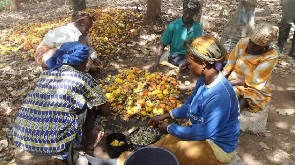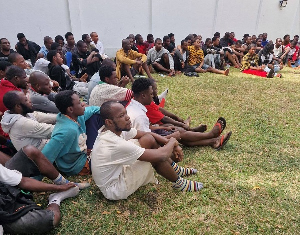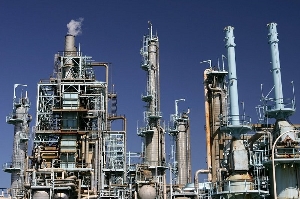Cashew cultivation in Ghana started in the 1960's with sporadic plantings in the Central and Greater Accra Regions and later spread to the Bono, Northern, Upper East and Upper West Regions.
Cashew is the leading non-traditional export revenue earner in the country. Undoubtedly, the cashew value chain brings a wide range of opportunities from production, through processing to the export of raw nuts.
Cashew grows in seven out of the ten regions of Ghana, although it is mostly found in the Bono and the Northern Regions. Around 350,000 farmers are directly engaged in cashew cultivation, generating a chain of ancillary employment for about 450,000 people who work as buying agents and dealers, transporters, retailers and pickers.
The low rates of cashew nut processing in Ghana are driven by a number of factors. These include limited infrastructure and local processors.
Ghana is among Africa’s major producers of cashew nuts. Ghana currently produces around 85,000 metric tonnes of raw cashew nuts each year, which accounts for about one percent of the worlds’ total production.
Global cashew demand
The fast increasing production of cashew in the country has been fuelled by the rapid global demand and consumption of cashew nuts, especially in the developed economies such as USA, China and EU. The driven factor for the rising consumption of cashew nuts is its health and nutritional benefits.
This has created an opportunity for cashew production countries across the globe to step up their game to meet the ever increasing demand. It is estimated that the market for raw cashew nuts will continue to grow at an annual rate of 4.27% from 2020 to 2025 with projected market value of about US$7 billion.
According to the African Cashew Alliance (ACA), global production of cashew is around 3.8 million tonnes of which Africa accounts 60%.
Cote d’Ivoire is the leading producer with estimated annual production of one (1) metric tonne. Ghana has also been featuring prominently in the equation with over 100,000-metric tonne annual production.
Per the potential of the crop, the government as well as all other interested bodies in the country have been working assiduously to soar Ghana’s cashew production to maximise its benefits. Cashew vision?
Local processors challenges
Ghana has a few cashew processing plants, with a total annual capacity of 65,000 metric tonnes of raw cashews.
There are a number of challenges that hinder local processing of cashew nuts in Ghana. Key amongst these is a lack of capital to maintain operations, alongside the inability of local processors to access raw cashew nuts from farmers.
Local processors also face intense competition from foreign processors most notably from Asia who drive up cashew nut prices.
While Asian processors and exporters are able to afford high farmgate prices due to their access to preferential interest rates in their home countries, local processors are unable to compete, leaving them simply unable to afford to or purchase raw cashew nuts.
Cashew farmers also demonstrate a preference for selling their nuts to Asian processors and exporters who pay them immediately in cash.
These conditions leave Ghana off the field, thereby missing out on the significant opportunities for jobs and revenue generation.
Programmes and interventions
The interest in cashew cultivation was rekindled with the introduction of the Economic Recovery Programme (ERP) in 1983, when cashew was identified as one of the major non-traditional crops to be developed as part of government’s efforts to diversify the country’s export base.
Another is the implementation of ‘Planting for Export and Rural Development’ (PERD). The decentralised programme is aimed at increasing and diversifying Ghana’s tree crop production and export away from the over reliance on cocoa.
Targeted crops under PERD include cashew, coconut, rubber, oil palm, coffee and shea. This has seen many District Assemblies, especially those located within the transitional and Savanna zones distributing free cashew seeds and seedlings to farmers for planting. It is expected to accelerate cashew production in the next few years to come.
The Tree Crops Development Authority (TCDA), under the Ministry of Food and Agriculture also launched a five-year strategic and implementation plan geared towards the development of a competitive and sustainable tree crops industry in Ghana. The authority has a mandate to regulate and create a conducive environment for the development of tree and industrial crops such as cashew.
Has Ghana learnt from other countries?
Governments in key cashew producing countries across Africa are increasingly rolling out strategies to increase both the production and processing of raw cashew nuts.
For example, in Cote d'Ivoire, an export tax of FCFA 30 per kg of raw cashew nuts has recently been introduced. Revenue from this tax is used to subsidise and support local processors. This has incentivised local processing, making Côte d’Ivoire, the largest cashew processor in Africa, with a capacity of 70,000 metric tonnes annually.
Similarly, Mozambique and Tanzania have adopted a range of measures to protect and incentivise local cashew processors. These include granting local processors preferential access to raw cashew nuts. It also includes imposing export duties on raw cashew nuts.
Meanwhile, since 2009 Kenya has introduced a ban on the export of raw cashew nuts, a strategy which has increased local processing from 30% in 2009 to 80% in 2012.
The Cambodian government has identified cashew as an agro-industrial crop and also one of the 12 priority crops and has been taking various steps to raise its output and competitiveness through economic diversification. The government has enacted the National Policy on Cashew Nuts for 2022-27 which aims to increase production and value-added, giving hope to cashew farmers.
Questions
Does the Tree Crops Development Authority have adequate funds to achieve set targets?
How is the 5-year Strategy and Implementation Plan doing?
Where is the $100 million to achieve the 5-year Strategy and Implementation Plan?
The $5 million annual pledge by MoFA, where is it?
Are donor partners overwrought?
Are we over relying on donors?
Will the 5-year Strategy continue if power changes hands?
One of my beloved writer, Chinua Achebe, the Nigerian novelist seen by millions as the father of African literature, once said “The trouble with Africa is simply and squarely a failure of leadership. There is nothing basically wrong with the African land or climate or water or air or anything else. The African problem is the unwillingness or inability of its leaders to rise to the responsibility, to the challenge of personal example which are the hallmarks of true leadership”.
What he meant was that given the current and expected future challenges facing Ghana’s domestic food security, there is an urgent need to critically assess agricultural development policies and donor aid initiatives. There is also an urgent need to examine export led priorities, including in particular, cashew nut sectoral planning.
He believes that to date, national agricultural planning and policy appears to prioritise production of export commodities above local food production, there is a vital need for programmes that increase support for local food crop farmers and domestic food provisioning.
There is also an as yet unmet opportunity for Ghana to benefit from investments that enable in country processing and value adding as part of expansion of the cashew sector. Such policy and planning initiatives may ensure Ghana is able to benefit socially and economically from the growing global demand for cashew nuts.
The writer is an Agriculturist, prize-winning journalist, Project Management Professional and Founder, Motivating the Farmer Africa.
Opinions of Friday, 10 March 2023
Columnist: Nana Yaw Reuben
Our cashew vision; has much changed?
Africa














